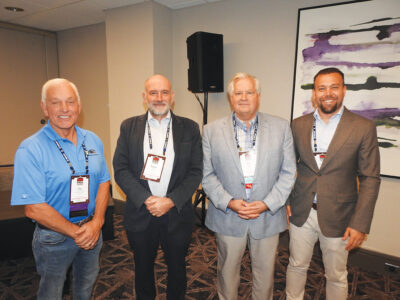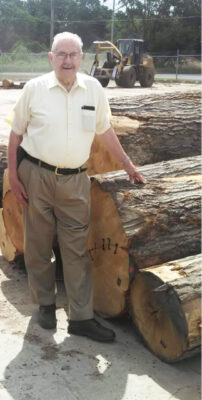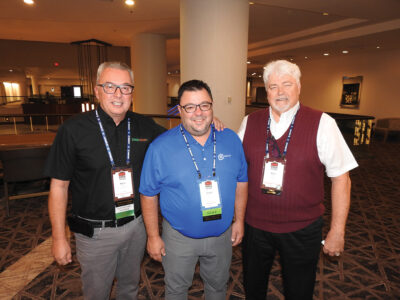Thoughts of concern about the marketplace are building in the Northeast as lumber sales representatives list concerns about demand, imitation wood, labor and fuel prices. There are few who are hopeful that the summer will improve the market.
A lumber representative located in Pennsylvania had a negative opinion about the marketplace, for which he provided reasoning. “Landowners aren’t selling. I can sell everything we can manufacture but getting the raw product is where the problem is. It’s gotten a little bit better since the election is over. Maybe people will feel better about selling off some of their assets,” he said. It is the same as it was six months ago but “prices have gone up as far as what we get for our products. I think it’s because there’s a shortage. The mills aren’t making enough to fill the needed kiln capacity. I think they’re raising prices to keep those filled. What bothers me is that once they get filled up, they’ll start dropping prices again. It’s a bad system here at the moment. I’m hoping by summer, once everyone gets their feet wet and they make decisions, things will get better,” he explained.
As for species, they handle Cherry, Hard and Soft Maple, Ash, Beech, Birch, Poplar, Hickory and Red and White Oak in No. 2 Common and Better. Except Cherry, “everything is selling pretty well right now but White Oak is the best, followed by Soft Maple.”
They sell most of their products to kiln dry companies, exporters and domestic veneer plants.
As for his thoughts on the proposed tariffs, he would “rather have jobs here in the United States. We’ve just got to get the manufacturers to build back here for us.” He listed labor, inflation and fuel prices as issues his company has encountered. “One year, I spent $200,000 for my diesel trucks. The next year, I spent $425,000 to run the same trucks and the same products,” he said.
In West Virginia, a lumber source explained why he rated the market “mediocre” and how it is “a little” better than six months ago, by stating, “we’ve got a couple of good items. A couple of them are better than a doornail. Prices are not where they should be. When the weather cools off, we have a little more flexibility. We only have a green sawmill; we don’t have any dry kilns. We have to keep the lumber and the logs turned over quick but in the winter, I can wait a little on some of the items. It seems better and I think part of the reason is that there are so many people going out of business. We used to do 15 billion board feet back in 2008 and 2009 when the housing industry collapsed. We only did five billion board feet in 2024. We have lost at least two-thirds of the capacity.”
They offer Red Oak, Cherry and Poplar in “the Common grades for furniture and cabinet production. Then we do the high grades such as FAS and FAS 1F for the millwork and export business,” he said. He explained that Soft Maple, “seems to be okay and it’s moving along. My Hard Maple orders fell away because my main customer switched from Hard Maple to Soft Maple. Red Oak yields well but Poplar has outstripped it a little bit. Poplar is easy to work up and kiln dries quickly. It’s tough to build a real demand for it. During Covid, they raised the prices and it was worth more than Red Oak was. Now, it’s maybe $100 less than the high-grade Red Oak but it’s better than it was. The substitutes like Radiata Pine and all the stuff they import took the place of it but during Covid, they couldn’t get it so they were buying the domestic species and made sure they got it.”
Most of the furniture manufacturers that they would sell to are, as he said, “gone but the hardwood flooring people and truck-trailer flooring, which I used to do a lot of that but not so much lately, are customers. The Commons are exported to Asia but we don’t export directly. We also sell to kiln dryers and distribution yards. Millwork houses will buy but they just want the high-end and there are the pallet manufacturers, too. We used to do some timbers for the crane mats but we haven’t done that in a few years. I haven’t been fooling around with big timbers or railroad ties because I haven’t had enough help.” As for any comments his customers have, he mentioned that they have said it is slow. Despite the market’s mediocrity and his customer’s reports on slow business, he said, “this downturn has been tough but it isn’t as bad as it was in 1982 or 2008.”
He also delved into the labor crisis: “We’ve had trouble hiring help. Just recently, we’ve picked up a few employees but it’s dicey. If demand picks up just a small amount, it’s going to really jump. We’re still fighting with trucks. That’s hurting me. We used to have two trucks of our own and I would drive 500 miles or more to deliver lumber but I got out of the trucking business eight or nine years ago. We don’t travel as far now- about 150 miles or so and I hire drivers. I’d rather take less money close to home than drag it two states away.”
Another issue he listed is accessing machine parts. “Most of our equipment is older and nobody carries it in inventory anymore. We have to carry a bigger inventory of parts and supplies on location. If I must wait three-four months to get something, I won’t need it because I’ll be out of business when it gets here,” he added.
“Slow” due to a “lack of demand” caused by “uncertainty in the marketplace because of high interest rates” and mortgage rates not being where they “need to be to spur on single family home building,” were what a lumber salesman in Maine had to say about the market in his area. It is worse than six months ago.
Yellow Birch, “quite a bit of upper grade” in Ash, Hard and Soft Maple in addition to “anywhere from railroad ties to FAS lumber and everything in between,” are what he said they offer. White Hard Maple is selling the best.
Their customers are furniture, kitchen cabinet, pallet, railroad and flooring manufacturers as well as distribution yards and wholesale companies. He mentioned that everyone “is commenting on how slow it is.”
He went into detail on his opinion about potential tariffs the industry may be facing. “Nobody knows who will be effected by the tariffs or what the ramifications will be but I do think it’s a conversation many are having. They’re imminent. We have somewhat of an idea because of our experience from before. I think it will have a negative effect in the long run. Initially, I think there will be a scramble to get lumber on boats prior to the tariff dates and that does seem to be happening a little bit but eventually, once the tariffs are implemented, they will have a negative effect on our industry,” he said.








